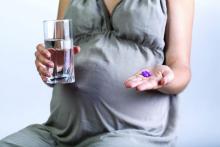BOSTON – World Health Organization guidelines on the use of isoniazid to prevent tuberculosis in HIV-infected women during pregnancy may need to be reconsidered in light of new evidence that isoniazid preventive therapy (IPT) is associated with a high risk for adverse pregnancy events, investigators say.
Among 156 HIV-infected pregnant women, the rate of adverse pregnancy outcomes was 23% for those randomly assigned to immediate IPT during pregnancy versus 17% for women randomized to IPT that was delayed until 12 weeks postpartum, a significant difference (P = .009), reported Amita Gupta, MD, from Johns Hopkins University in Baltimore.
“These pregnancy outcomes included in utero demise – stillbirth – and low birth weight – less than 2500 grams,” she said at the annual Conference on Retroviruses and Opportunistic Infections.There were six maternal deaths: two in the immediate therapy arm and four in the delayed arm. Two of the deaths were related to isoniazid-induced liver failure, and two other instances of liver failure were from other causes. The two remaining deaths were deemed unrelated to isoniazid: One woman died from bacterial sepsis, and the other from pneumonia.
The incidence of TB infections was low in both study arms, Dr. Gupta noted.
“So should we really be prioritizing IPT in pregnancy or give women the choice to know what the facts are and to select if they feel that they want to take on IPT during pregnancy or defer it until after they deliver?” she said at a briefing following her presentation of the data in an oral abstract session.
WHO guidelines for management of latent tuberculosis infections state that “[a]s isoniazid and rifampicin, the drugs commonly used in preventive treatment, are safe for use in pregnant women, pregnancy should not disqualify women living with HIV from receiving preventive treatment. Nevertheless, sound clinical judgment is required to determine the best time to provide it.”


